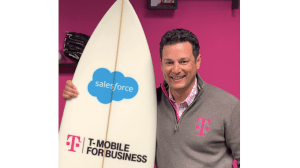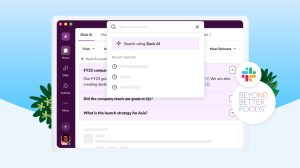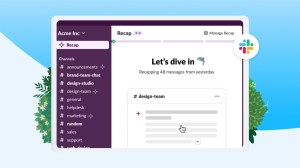Q&A: T-Mobile’s Mike Katz on 10 Years of Customer Experience Transformation




Jamie Domenici
Over the years, I’ve had the pleasure of working with some amazing Trailblazers, customers who constantly push the envelope by prioritizing innovation as an “always-on” activity and reimagining customer experiences as the world changes around us.
One of those Trailblazers is Mike Katz, EVP at T-Mobile for Business. This year, we welcomed T-Mobile to Salesforce’s Customer KOA Club, which is a community that celebrates customers who have been driving innovation, transforming their businesses and getting closer to their customers with Salesforce for more than a decade. We caught up with Mike to talk about how T-Mobile has transformed over the last decade and the opportunities that lie ahead.
Can you paint a picture of what T-Mobile was like 10 years ago?
I’ve been with T-Mobile 20 years, so I’ve seen a lot of ups and downs. I’ve seen us ascend to become the hot wireless company—remember the Sidekick and Paris Hilton? Charles Barkley and his Five Faves? And I saw us fall to fourth place in a four-person race. Fast forward to today and the results speak for themselves. We’ve taken share from AT&T and Verizon in the postpaid phone segment for 21 straight quarters.
But back to your question, 10 years ago we were in a tough situation. We were losing more than a million customers a year. Our churn was absolutely through the roof. We had a network that had fallen behind the other national providers and we lacked the resources to buy the spectrum necessary for us to expand beyond the urban core.
Can you talk more about why that was? What were some of the biggest challenges you were coming up against?
Like most businesses, wireless isn’t complicated when you boil it down. You need a quality network, which really means you need access to quality spectrum. And you have to offer a service—or rate plans, using the wireless vernacular—that offer the best perceived value to the customer.
Back then, we lacked both spectrum and perceived value. AT&T and Verizon controlled the most valuable spectrum at the time, called low-band spectrum. That spectrum allowed their networks to reach into the suburbs and rural areas, while we were largely relegated to cities. It was a vicious cycle. AT&T and Verizon could charge more and still keep their customers, which in turn gave them the ability to reinvest in their network and lock down exclusive device relationships. We couldn’t even get access to sell the iPhone until 2013!
Let’s fast-forward 10 years. What is T-Mobile like today? How has the industry and customer expectations changed?
How long do you have!? I could literally go on all day.
The wireless industry has taken a complete 180 since we unleashed what we call the “Un-carrier” movement more than six years ago. Back then, wireless companies were universally hated like cable companies, banks or insurance companies are today. Customers were held hostage by two-year contracts, they got charged ungodly sums for talking too much or spending too much time online. And using your phone internationally? Forget about it… unless you were cool with a four-figure international roaming bill.
We changed all of that! At first, Verizon and AT&T were hesitant to follow our example. But as we took share from them quarter-after-quarter they eventually began to adopt many of our most bold and aggressive moves. They got rid of data buckets, overages and international roaming fees—at least for consumers. Businesses are a different story.
Being in this hyper-competitive industry, we were certainly concerned about what would happen if they matched all of our innovations. How would we differentiate ourselves? As it turns out, matching a competitor’s move or moves doesn’t fundamentally change a company’s culture. A “customer-first” culture is what really separates us.
Can you give me an example?
One of our latest Un-carrier moves is called Team of Experts. It’s a fundamental rethinking of customer service. If you’re a T-Mobile customer, you literally have a team of people that you’ll reach every time you call in for help. No robots and no handoffs from department to department. From a competitive standpoint, that’s a game changer. It’s not just a change to a rate plan. It’s not something AT&T or Verizon can just switch on when they see customers porting over to T-Mobile. And it’s 100 percent enabled by our culture. If we would’ve tried to roll out Team of Experts when we kicked off the Un-carrier movement, it probably wouldn’t have worked because it takes time to build a culture that’s ready and willing to embrace tectonic shifts. But today, that culture is the secret sauce. And it’s why we’ve gotten multiple JD Power awards for great customer care.
Yes, at Salesforce, we believe customers always come first. Can you talk to us about how T-Mobile is using Salesforce?
We run our business on Salesforce. What started 10 years ago as a rogue application used by a few people for CRM has transformed into a critical tool that spans nearly every part of our business, from the retail frontline team to our army of T-Mobile for Business reps to our Metro by T-Mobile brand. Salesforce allows us to capture information from millions of potential buyers and move it across channels, which saves customers time. We built a custom app on Salesforce that allows us to streamline the retail sales process. Now, our reps can capture leads and manage appointments, resulting in a better customer experience. We also use Salesforce to manage our sales pipeline and provide great customer service. We love the automation Salesforce provides across the entire customer lifecycle.
For T-Mobile for Business, working with Salesforce has allowed us to focus on serving our customers by streamlining processes and effectively creating a complete office solution—from credit processing workflows to contract lifecycle management. With newer tools like Einstein Analytics, we can take advantage of combining artificial intelligence with our customer-centric business model, which allows us to create new and exciting mobile experiences for our customers.
Thinking about the next 10 years, what keeps you up at night?
It’s not the challenges but the opportunities that keep me awake at night. We’re just now entering what has the potential to be one of the most transformative technology revolutions in history. There are so many ways we can serve customers and the things they are about to do with advanced mobility. Think about the innovation that’s taken place solely because of network evolution. The entire gig economy—Lyft, AirBnB, DoorDash, Lime, etc.—wouldn’t exist without the advent of 4G networks. The next step to 5G will be even more transformative. And we’re going to be right in the middle of it. I can’t wait.
As long as we stay true to our mission—putting the customer at the center of every decision we make—I have all the confidence in the world that we’ll continue the unprecedented run we’ve been on the last 6+ years.















